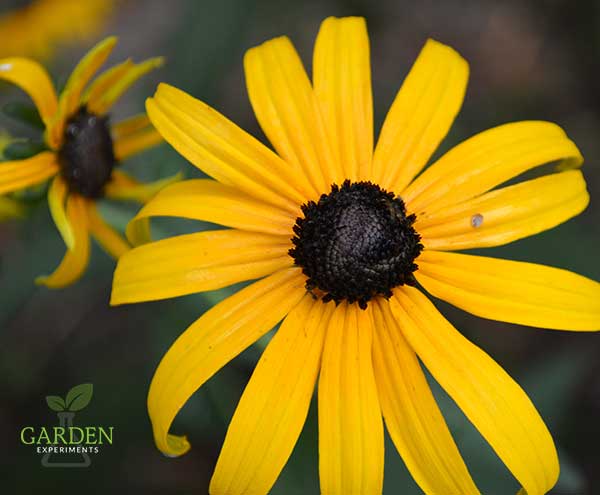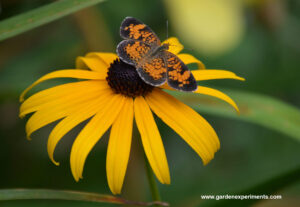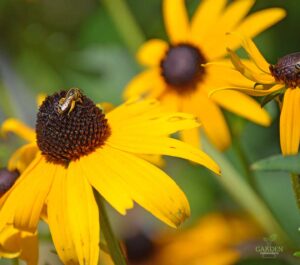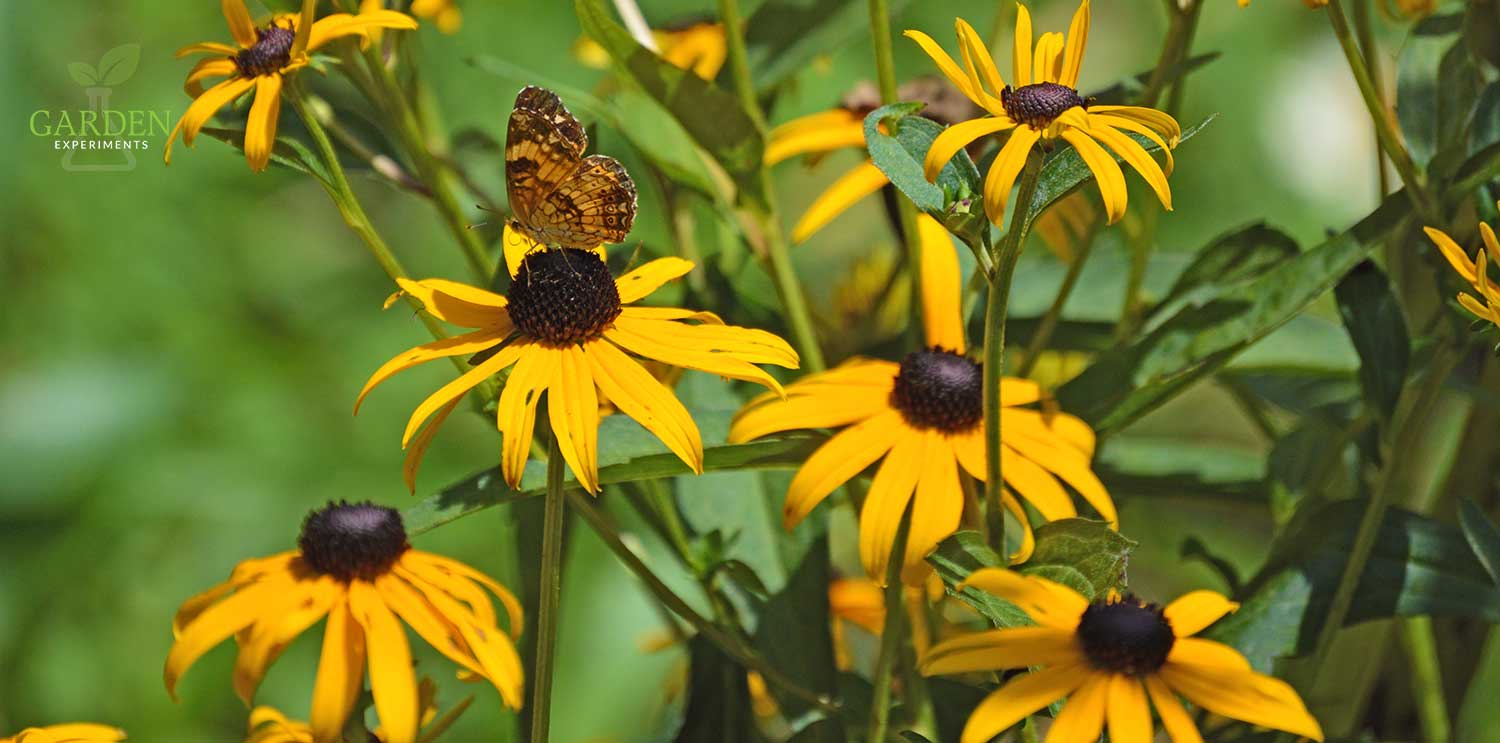
Black-eyed Susan is My Favorite Plant-It-And-Forget-It Flower:
If you’re looking for a plant-it-and-forget-it type of plant that still produces lots of flowers AND attracts pollinators, then look no further than the black-eyed Susan (Rudbeckia hirta).
This easy-to-grow wildflower is found throughout North America, alongside roads, in grassy openings and prairies, and even along the edge of forests. It blooms in mid- to late summer through fall and varies in height from one foot to several feet.
With the dark brown center and bright orange-yellow petals, it resembles a tiny sunflower, which makes sense, as it is in the sunflower family – Asteraceae.
Their leaves are mostly basal and are rather hairy and rough. The hairy, rough leaves and stems can irritate your skin, so wear long sleeves and gloves when working with this plant. I’ve failed to do so on occasion and ended up with a bit of a rash from the irritation.
Wildlife Uses for Black-eyed Susan
It is deer resistant, drought tolerant, and attracts butterflies and bees and birds eat the seeds. In a cluster, this plant provides a great splash of color in your garden.
Did I mention they are super easy to grow and very low maintenance? It’s like a win-win.
Where to Plant It & How to Grow It
For best flowering, plant in full sun. However, they can tolerate a little shade.
If you want to ensure longer bloom time, dead head the plants. But for low maintenance (that’s the way I do it!), just leave them for the birds.
Powdery Mildew
I have noticed that in really humid, wet summers, my black-eyed Susans will get powdery mildew in some places. Thinning out really thick clumps may help this.
Fast-spreading plant
Did I mention this plant spreads, I mean really spreads? So be sure that you plant it where you don’t mind it filling in empty areas. You will need to get in there and thin it out if you want to keep it from taking over. However, most of the time, I do nothing to these plants and they do well. They appear to be very tolerant and forgiving.
Rudbeckia varieties can be perennial, annual, or biennial – so check it out before you make your choice on the type of black-eyed Susan to plant in your garden.
How to Propagate
You can propagate these plants be dividing the roots and replanting. Keep the new plants well-watered until they are established. I have been known to literally tear up a piece of this plant and stick it in the ground and water it and it has survived. Talk about hardy!
You can also grow many of the varieties from seed, but getting a clump from a fellow gardener is definitely the easier route.
Characteristics of Black-eyed Susans
- Easy to grow
- Drought tolerant
- Deer resistant
- Plant in full sun for best results
- Low maintenance
- Spread well
- Attract butterflies, bees, and birds
- Make good long-lasting cut flowers
Companion Plants for Black-Eyed Susan
In large clumps, black-eyed Susans provide a strong pop of color in any garden, especially in spots where it may be tougher to grow less hardy plants. For a nice contrast of colors and textures, try mixing them with purple, silver, or blue flowering plants or tall grasses. Pink muhly grass, blue anise sage, purple heart, Mexican salvia, lamb’s ear, other sages would be the perfect pairings.
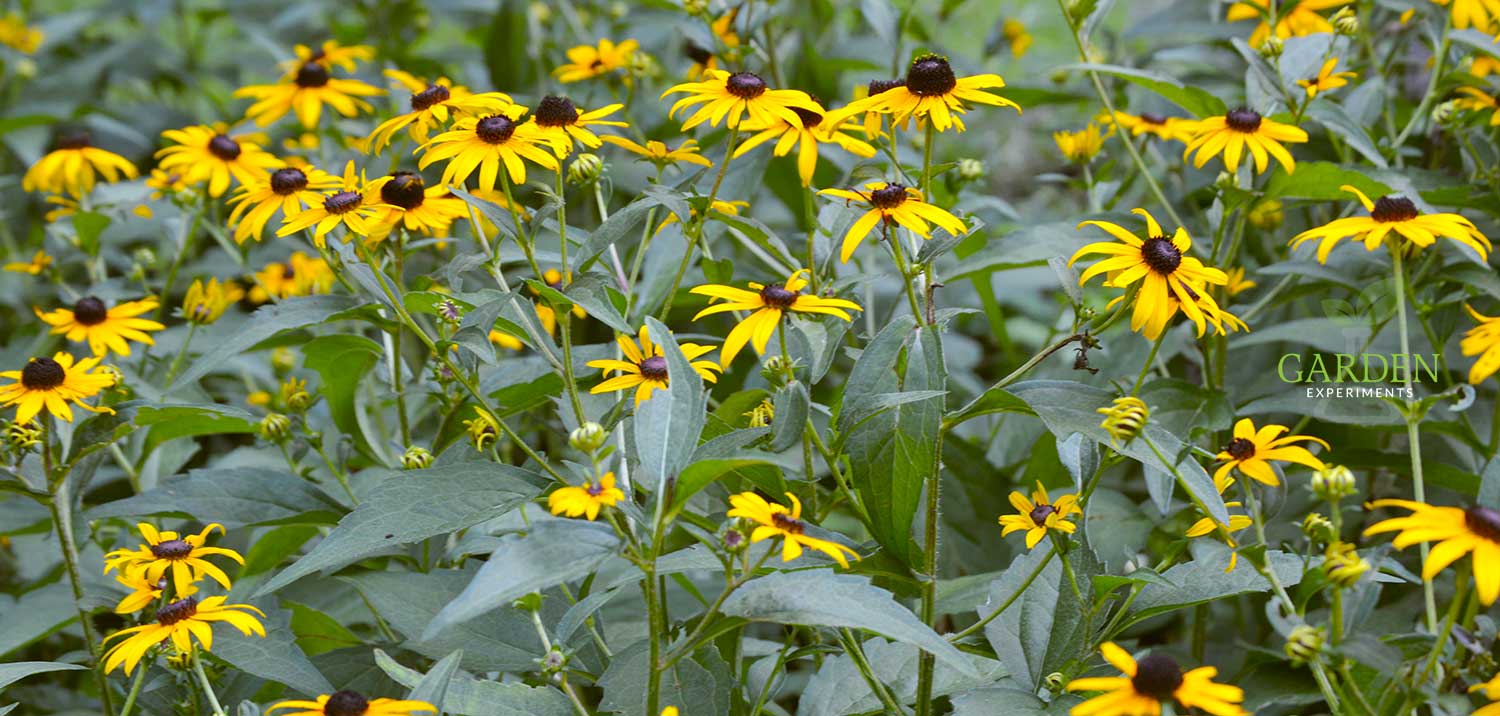
Additional Resources
View photos of Rudbeckia hirta: http://plants.usda.gov/java/imageGallery?category=symbol&imagetype=all&txtparm=RUHI2&viewsort=25&sort=sciname
Read the USDA plant fact sheet: http://plants.usda.gov/factsheet/pdf/fs_ruhi2.pdf

